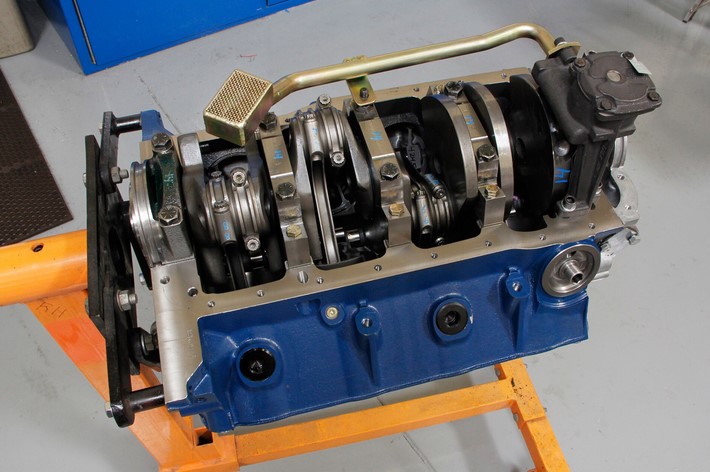
The 460 Ford Engine Diagram provides a detailed visual representation of the Ford 460 cubic inch engine’s internal structure and components. This diagram is an essential tool for understanding the engine’s operation, maintenance, and repair. It includes schematics of the engine’s various parts such as the cylinders, pistons, valves, and the fuel and exhaust systems. The diagram also illustrates the engine’s cooling, lubrication, and ignition systems. It serves as a comprehensive guide for mechanics, engineers, and anyone interested in the technical aspects of the Ford 460 engine.
Understanding the Mechanics: Diagrams and Schematics for Ford 460 Cubic Inch Engines
The Ford 460 cubic inch engine, also known as the Ford 385, is a series of big-block V8 engines designed and manufactured by the Ford Motor Company. Introduced in 1968, these engines have powered a variety of Ford vehicles, from trucks and vans to luxury cars and motorhomes. Understanding the mechanics of these engines can be a complex task, but diagrams and schematics can provide a clear and detailed visual representation of their inner workings.
A Ford 460 engine diagram is essentially a blueprint of the engine, showing the arrangement of its various components and how they fit together. It provides a comprehensive view of the engine’s structure, from the cylinder block and heads to the intake and exhaust manifolds, the timing chain, and the oil pump. Each part is labeled and its function explained, making it easier to understand the engine’s operation and to diagnose and repair any problems that may arise.
The cylinder block, the largest component of the engine, houses the cylinders and the crankshaft. The cylinders are where the combustion process takes place, driving the pistons up and down to turn the crankshaft and generate power. The cylinder heads, bolted to the top of the block, contain the valves that control the flow of air and fuel into the cylinders and the expulsion of exhaust gases.
The intake manifold, attached to the cylinder heads, channels air and fuel into the cylinders, while the exhaust manifold collects the exhaust gases and directs them out of the engine. The timing chain connects the crankshaft to the camshaft, ensuring that the valves open and close at the correct times during the combustion cycle. The oil pump, located at the bottom of the engine, circulates oil to lubricate the moving parts and cool the engine.
A schematic for a Ford 460 engine, on the other hand, is a simplified representation of the engine’s electrical system. It shows the wiring connections between the various electrical components, such as the ignition coil, the distributor, the spark plugs, and the battery. The ignition coil generates a high voltage current, which the distributor sends to the spark plugs at the right moment to ignite the air-fuel mixture in the cylinders. The battery provides the electrical power needed to start the engine and run the vehicle’s electrical systems.
Understanding these diagrams and schematics is crucial for anyone who wants to maintain or repair a Ford 460 engine. They provide a roadmap to the engine’s structure and operation, making it easier to identify and fix problems, replace parts, and perform routine maintenance. They also offer valuable insights into the engine’s design and the engineering principles behind it.
In conclusion, diagrams and schematics for Ford 460 cubic inch engines are indispensable tools for understanding the mechanics of these powerful and versatile engines. They demystify the complexity of the engine, breaking it down into its individual components and showing how they work together to power the vehicle. Whether you’re a professional mechanic or a DIY enthusiast, these diagrams and schematics can help you keep your Ford 460 engine running smoothly and efficiently.The 460 Ford Engine Diagram provides a detailed visual representation of the Ford 460 cubic inch engine’s internal structure and components. It serves as a valuable resource for understanding the engine’s functionality, troubleshooting issues, and performing maintenance or repairs. The schematics highlight the engine’s complexity, showcasing various parts such as the carburetor, intake manifold, exhaust system, and more. Overall, these diagrams and schematics are essential tools for anyone working with or studying Ford’s 460 cubic inch engines.

